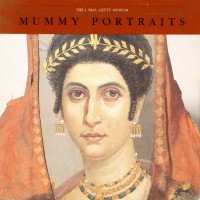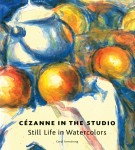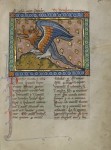Yesterday, Getty Publications, publishers of exhibition catalogs, art history monographs and studies of archaeology, history, conservation, photography, architecture, and so much more, launched Virtual Library which makes freely available more than 250 titles published since 1966. The books can be read online or downloaded in their entirety in pdf format and are fully searchable.
The publications, the earliest of which dates from 1966, span the Getty’s rich publishing history, and include collection catalogues that highlight masterpieces from Getty collections, translations of groundbreaking texts on the visual arts, essential works of art historical research, exhibition catalogues, journals, and publications that serve as key resources in the conservation of the world’s cultural heritage. The Virtual Library includes titles published by the J. Paul Getty Museum, the Getty Conservation Institute, and the Getty Research Institute. Titles will be added to the Virtual Library on an ongoing basis.
 There are some real treasures on the list. I’ve already downloaded Mummy Portraits in the J. Paul Getty Museum, a short 1982 text on the beautiful Roman Egyptian mummy portraits also known as the Fayum Portraits, The Colors of Clay: Special Techniques in Athenian Vases, sure to feed my fascination with the painstaking process of decorating Greek pottery, The Restoration of Ancient Bronzes: Naples and Beyond, an essay collection on the history of restoration and conservation of ancient Greek and Roman bronzes centered around Naples where so many bronzes were retrieved from Pompeii and Herculaneum, and a thematically related book, History of Restoration of Ancient Stone Sculptures, which covers restoration practices from antiquity to today.
There are some real treasures on the list. I’ve already downloaded Mummy Portraits in the J. Paul Getty Museum, a short 1982 text on the beautiful Roman Egyptian mummy portraits also known as the Fayum Portraits, The Colors of Clay: Special Techniques in Athenian Vases, sure to feed my fascination with the painstaking process of decorating Greek pottery, The Restoration of Ancient Bronzes: Naples and Beyond, an essay collection on the history of restoration and conservation of ancient Greek and Roman bronzes centered around Naples where so many bronzes were retrieved from Pompeii and Herculaneum, and a thematically related book, History of Restoration of Ancient Stone Sculptures, which covers restoration practices from antiquity to today.
One of the great things about the Virtual Library books is the quality of the scans. Often pdf versions of books are so low resolution they’re really glorified text files for reading. The Getty, on the other hand, has seen to it that the images in these books are just as compelling as the text. You can zoom in to an impressive degree and enjoy flipping through the photographs just as you would with the hard copy. Since, let’s face it, looking at the pictures is the main reason people buy exhibition catalogs, this is an important facet of a library containing so many books on artifacts and paintings in the museum collection.
 Some of the picture-intensive books I’ve got my eye on are Cézanne in the Studio: Still Life in Watercolors, Greek Gold from Hellenistic Egypt and Gardens of the Roman World. The second of those is a subject that I literally know nothing about, and according to the summary, the experts don’t know much about them either. The book is about a collection of glorious Hellenist gold jewelry in the J. Paul Getty Museum that is unprovenanced (looted?) and it covers the turbulent history of Egypt from Alexander the Great through the last ruler of his general Ptolemy’s dynasty: Cleopatra VII.
Some of the picture-intensive books I’ve got my eye on are Cézanne in the Studio: Still Life in Watercolors, Greek Gold from Hellenistic Egypt and Gardens of the Roman World. The second of those is a subject that I literally know nothing about, and according to the summary, the experts don’t know much about them either. The book is about a collection of glorious Hellenist gold jewelry in the J. Paul Getty Museum that is unprovenanced (looted?) and it covers the turbulent history of Egypt from Alexander the Great through the last ruler of his general Ptolemy’s dynasty: Cleopatra VII.
 The Virtual Library is part of a larger initiative the Getty has undertaken to share their rich cultural and educational resources as part of their educational mission. Last year they launched the Open Content Program, a database of high resolution images of artworks in the Getty Museum collections and the special collections of the Getty Research Institute. There are more than 10,000 images available now, all of them free to download and use. I have lost many a weekend browsing the Medieval and Renaissance illuminations, photographs from the Civil War to Walker Evans and great art works in the museum.
The Virtual Library is part of a larger initiative the Getty has undertaken to share their rich cultural and educational resources as part of their educational mission. Last year they launched the Open Content Program, a database of high resolution images of artworks in the Getty Museum collections and the special collections of the Getty Research Institute. There are more than 10,000 images available now, all of them free to download and use. I have lost many a weekend browsing the Medieval and Renaissance illuminations, photographs from the Civil War to Walker Evans and great art works in the museum.